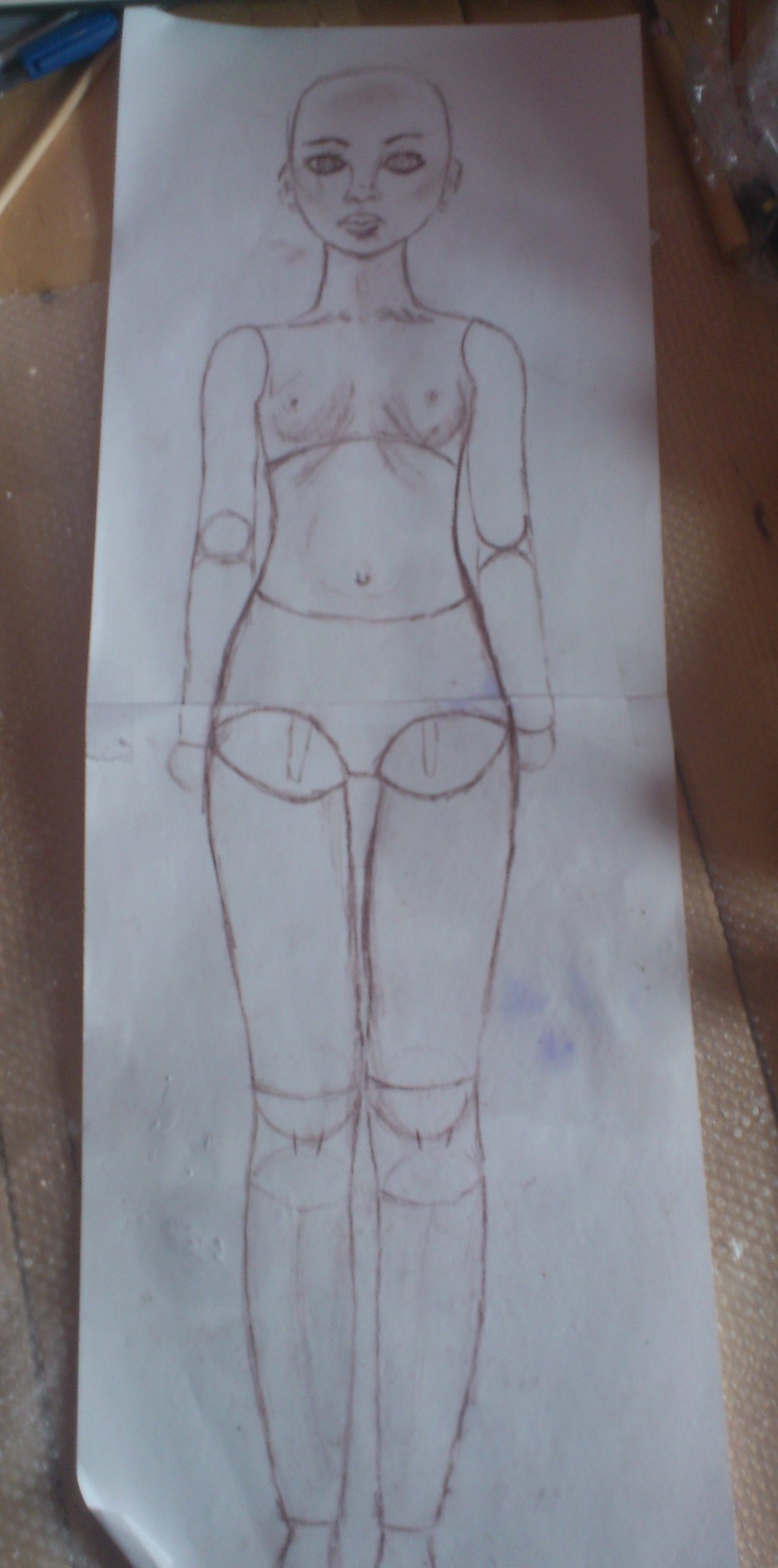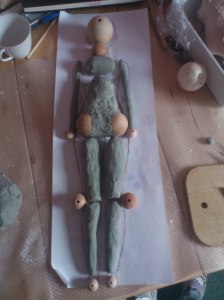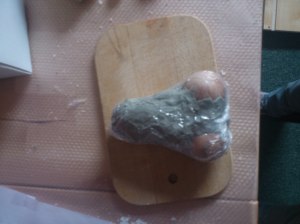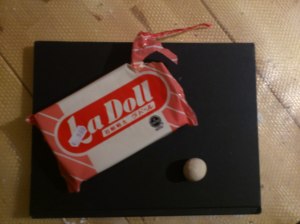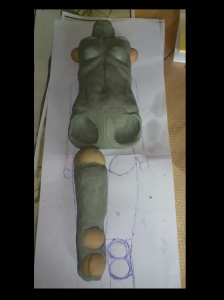Hannie Sarris, dutch doll artist
Hannie Sarris was a truly gifted doll artist from the Netherlands. I love looking at her doll pictures, as they are really magical and have something secretive about them. I think she really knew well how to work with paper clays.I think she mainly made fantasy figures. What I like about her is not only her style, but also the fact that she was a self-taught artist.
Hannie Sarris wrote wonderful books on doll making
I would love to own two of her four books on sculpting (Fairy fantasy or Poppen maken), but for very good reason, they are all sold out. If anyone knows where to get a secondhand sample in english or dutch, feel free to contact me! I really love this doll and the whole picture:
She was a member of DABIDA
Hannie Sarris was so good at doll making, that she was also a member of DABIDA, a dutch and belgian institute of doll artists. The institute promotes doll art of its members through the website and shows the work of DABIDA members together on shows, exhibitions and art related events. They also organize a DABIDA Annual Doll Award. Last but not least, they have a special DABIDA day once a year. Artist members show their pieces of art in a nice ambiance. They usually invite a famous doll artist as special guest. Actually, I recently read on their site that there’s also an Hannie Sarris Annual Doll Award 2014. Please check their website to check the details.
She gave classes and had free tutorials online
Hannie Sarris also had some classes for those eager to learn her techniques. I will post some free tutorials of her here to make it easier for you to find them:
Free tutorial on sculpting a fairy head
Free tutorial on sculpting a moon
Free tutorial on making a wig out of lamb
Hannie Sarris invented Premix
Hannie created her own clay by mixing La Doll and Premier clay. As a result her new invented version of the mixture was brought out by the clay factory and they called it Premix.Hannie Sarris wrote on her site:

“As was mentioned, Premix is a combination of La Doll and Premier clay and has combined all the benefits of both clays.I have worked with the mixture for years and I am happy to say the the premixed clay is much better than the “mixed by hand”. Premix is stronger, better to work with and better to sand. It is a superb clay for the most delicate figures in air dry clay. The clay is fine textured with almost no fibers in it, very pliable and easy to work with. It hardly sticks on your hands. It is simply wonderful clay!”
She wrote about La doll clay:

I do not own this picture. Copyright HannieSarris
” La Doll from Padico is sold in packages and is ready to use.
This clay is smooth and has a fine structure, so you can work with it very easy. It doesn’t crumble, so you can easily cut of little pieces. You can model with it as well as sculpt and carve. It is the perfect material to make fine and detailed work. After drying you can sand it very easy, so your work obtains a beautiful smooth skin. One disadvantage of La Doll is that very thin pieces like toes and fingers quickly break .
When you open the package of La Doll, it might be a bit tough, and when you take a piece off, you can see some fibers, this is normal. Sometimes the clay smells a bit.
Take a piece of La Doll and moisten your fingers a little, and knead the clay until it becomes soft. When it dries, it is normal to see some cracks in the clay. Don’t worry, just add smooth La Doll, and it is gone.”
Her decription of Premier:

I do not own this picture. Copyright HannieSarris
“Premier is a rather new clay, made by the same manufacturer of La Doll, Padico.
It is sold in red packages (see picture) and is ready to use.
It is very light and has a fine texture, is almost without any smell. You do not have to kneed it at all.
Premier is rather firm, keeps its shape very well and can be used to sculpt very small and detailed. This clay does not stick on your hands, something that many people will experience as pleasant. It has a rather long drying period, what gives you opportunity to keep working on it. After drying it is very strong, stronger than La Doll. You can easily cut pieces of, without the risk of crumbling. You can sand it very well, because of the fine structure.
Because of the white color, this clay type is very suitable for several painting techniques.
Due to the fact that Premier is extra strong, it can be used to sculpt fragile full sculpts without the use of other clay types for the fingers and toes.”
Check her website
Phew, that was a lot of information! Please make sure you check out her site to see her artwork. (A lot of you will know her already). I just felt like I wanted to give a bit of information about her, to introduce her to those of you who haven’t heard of her. If you like paperclay work, you should definitely have a look.
Hannie Sarris passed away on May 2nd, 2010. She will remembered through her beautiful art work.





